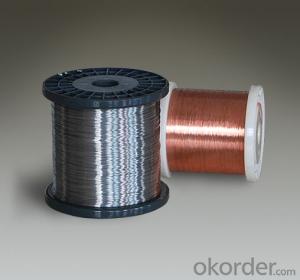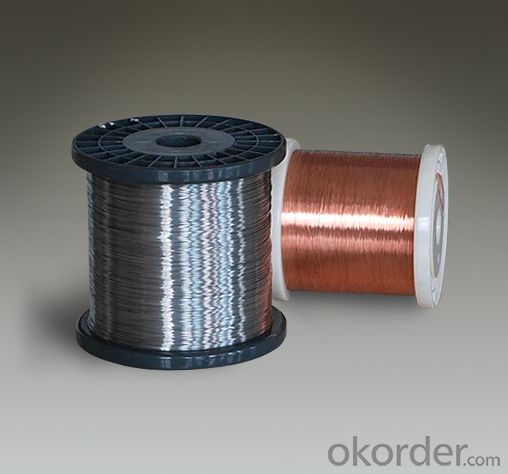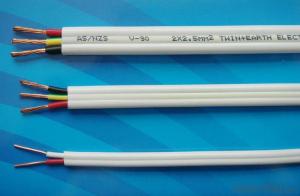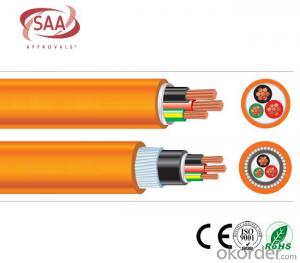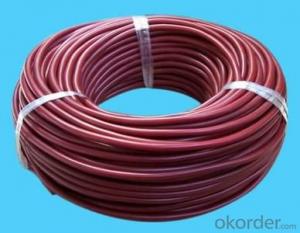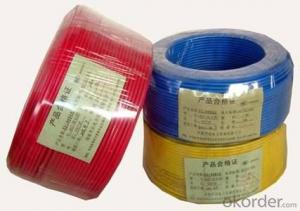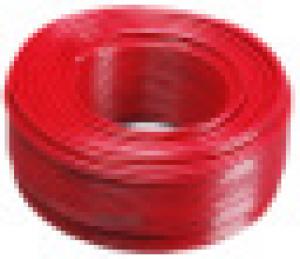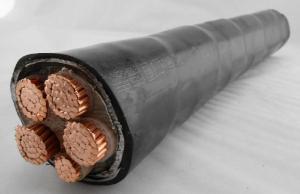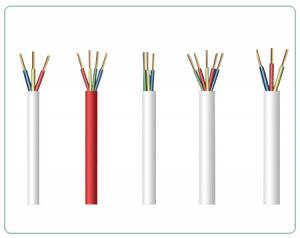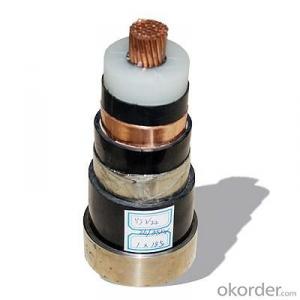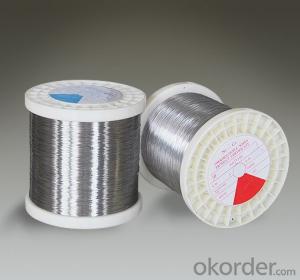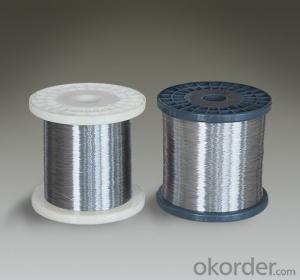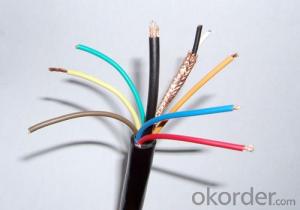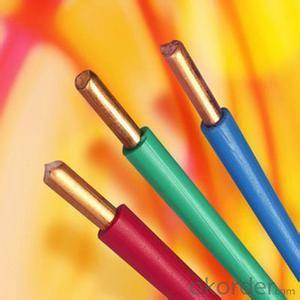Cu- CuNi (Constantan) thermocouple (Type T) A quality
- Loading Port:
- Shanghai
- Payment Terms:
- TT OR LC
- Min Order Qty:
- 100000 m
- Supply Capability:
- 1000000 m/month
OKorder Service Pledge
OKorder Financial Service
You Might Also Like
Specifications
1.Pass: ISO9001 certification
2.fine after-sale services
3.small order accepted
4.samples available
5.short delivery time
Cu-Ni resistance heating wire and strips
electrothermal resistance wires
copper nickel electrical alloy wires and strips
resistance alloy wires or strips
electrical wires
copper nickel resistance alloy
copper nickel wires and strips
1. Introduction
The copper-based low resistance heating alloy is widely used in low-voltage circuit breaker, thermal overload relay, and other low-voltage electrical product. It is one of the key materials of the low-voltage electrical products. The materials produced by our company have the characteristics of good resistance consistency and superior stability. We can supply all kinds of round wire, flat and sheet materials.
2.Marking
Each spool/package of alloy is supplied with a label or tag showing alloy type, nominal size, tare and net weight, resistance W/m (W/ft), charge number and a reference number.
3.size
wires:0.018-10mm Ribbons:0.05*0.2-2.0*6.0mm
Strips:0.5*5.0-5.0*250mm Bars:D10-100mm
Do you provide free samples?
Yes, we can provide a free sample for testing, If we have sample in stock, The quantity based on the material type, The buyer should bear all the shipping costs.
Please feel free to send us a inquiry and we are looking forward to cooperating with you!
FACTORY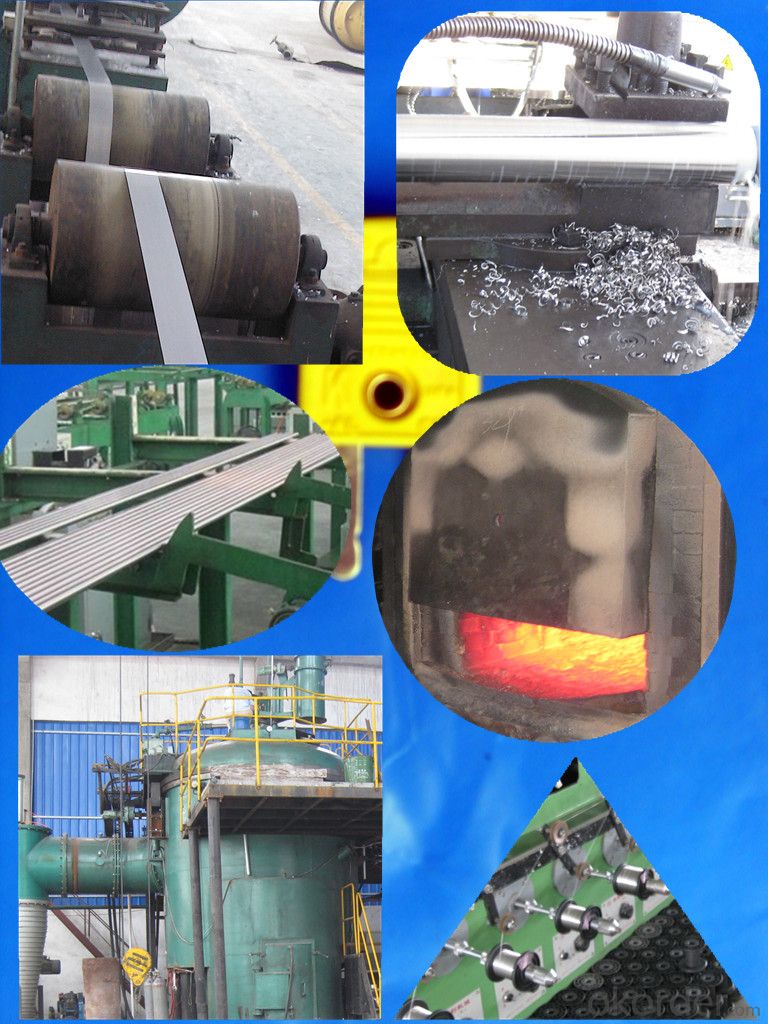
PACKING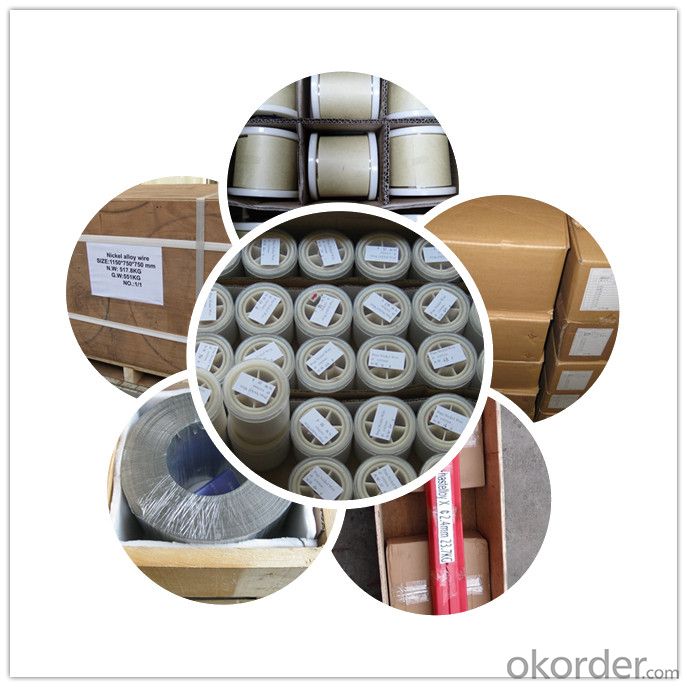
| Characteristic Grade | Resistivity ( 200C μΩ.m) | Max.working Temperature ( 0C) | Tensile Strength (Mpa) | Melting point (0C) | Density ( g/cm3) | TCR x10-6/ 0C (20~600 0C) | EMF vs Cu (μV/ 0C) (0~100 0C) |
| NC003 (CuNi1) | 0.03 | 200 | 210 | 1085 | 8.9 | <100 | -8 |
| NC005 (CuNi2) | 0.05 | 200 | 220 | 1090 | 8.9 | <120 | -12 |
| NC010 (CuNi6) | 0.1 | 220 | 250 | 1095 | 8.9 | <60 | -18 |
| NC012 (CuNi8) | 0.12 | 250 | 270 | 1097 | 8.9 | <57 | -22 |
| NC015 (CuNi10) | 0.15 | 250 | 290 | 1100 | 8.9 | <50 | -25 |
| NC020 (CuNi14) | 0.2 | 300 | 310 | 1115 | 8.9 | <30 | -28 |
| NC025 (CuNi19) | 0.25 | 300 | 340 | 1135 | 8.9 | <25 | -32 |
| NC030 (CuNi23) | 0.3 | 300 | 350 | 1150 | 8.9 | <16 | -34 |
| NC035 (CuNi30) | 0.35 | 350 | 400 | 1170 | 8.9 | <10 | -37 |
| NC040 (CuNi34) | 0.4 | 350 | 400 | 1180 | 8.9 | 0 | -39 |
| NC050 (CuNi44) | 0.5 | 400 | 420 | 1200 | 8.9 | <-6 | -43 |
- Q: What is the difference between the BVV line and the BV line?
- Will load 473KW current 560A need much cable, how big the casing
- Q: do i need to convert the incoming solar power to an a/c current?I have some electrical experience, I dont want to hire anyone
- Hey Pilot, it's really pretty simple. If all you want to do is dump the power your panels are producing into your homes electrical system, you need an, intertie inverter. These devices simply take the DC power from your solar array and convert it to AC, which is synchronized with the grids frequency, and pour it into your AC system. Any power your home is using first comes from the inverter. If it is using more than is available, the extra is made up from the utility. If your array is producing more than the home is using, the extra feeds back out through your meter into your neighbors home instead, and your meter runs backwards. Beware that some meters are racheting types, so even if the disc is spinning the other way, you might not be getting any credit for it. And in almost all cases, you are supposed to have a permit from the power company to do this. Our system uses a Xantrex inverter, which is a bit more complicated than a straight intertie. It also connects to a battery bank, allowing the inverter to continue feeding the house even if the grid goes down. With an intertie inverter, if the grid shuts off, your inverter does too, and your home will not have power even if the sun is shining. If I were you, I'd spend a little time getting educated on the subject, and avoid asking hacks like me online for advice. In my 12 years building, using and teaching solar power, I've learned there are two things in vast supply in solar energy, the sun, and missinformation. Try some of the sources below, and keep your airspeed up. I grew up on Cessna's myself, now I'm a Boeing guy. Take care, Rudydoo
- Q: Such as 6-ping line is the air conditioning line or what line, 4 level, 2.. 1.5 of it, please elaborate, thank you master! The The More
- From one to the inside to see the water, but also see
- Q: I am trying to install a GFI in my bathroom but it keeps popping. I have narrowed the problem down to the high hats. I think the switch for the high hats is installed on the neutral, but I am not sure. When I hook up the wires for the high hats, the gfi pops. I have checked all the outlets for reversed wires. I can not get to the wires on the high hats. Is this dangerous?
- it could kill you . do you think that is dangerous ?
- Q: Electrical wire with a diameter of 0.88 cm is wound on a spool with a radius of 28 cm and a height of 23 cm.(a) Through how many radians must the spool be turned to wrap one even layer of wire? rad(b) What is the length of this wound wire? m
- 23 cm / 0.88 cm 26.1 so you will have 26 turns of wire. Each turn is as long as the circumference of the cylinder, which is 2*28*π 176 cm so 26 x 176 4576 cm wire needed 1 rotation, one turn is 2π, so for 26 turns, you need to rotate by 26*2π radians. .
- Q: Hi everyone.We moved in a new house (not an appartment). The basement is finished. I am not usually be down there yet, so I can say it is not in use. I turned the separately partial heater down to 50 F degrees. The basement has some problem, the electric down there seems not steady. When I turn the neon lights on, it keeps blinking for the first 30 seconds. When I touch the switchers, it shocks me a little bit.For addition, my house is like 1600 square feet, 2 bed rooms, 1.5 baths. I keep the central air heater (pretty new, 2009) at 78 F degrees, and the electric bill first month came at $288 saying I used 2606 kWh for 20 days. I doubt that my basement's electrical wiring set-up is broken somewhere, so the electric leaks or wastes somehow.Questions are: Is it the first bill $288 for my house size weird? How do I test if my electrical wire set-up is not wasting my money?Thanks everyone.
- Check the fixture for correct polarity,the 'hot' wire goes to the black ballast wire. Also try high output neon fixtures which work better in lower temperatures
- Q: I replaced a light socket that came with wire pre attached to it. I Replaced the socket with screw the wire on type socket, and used Pricola LL7763 Type Set-1 18AWX2C 105C electrical wire, how high would this be rated for amps and watts? I using it for a light bulb 100W and a space heater set low, maybe 800W total peak usage, is this safe? Thanks, Sean
- At about 900 Watts, (about 7.2 Amps), you are BARELY within safety limits. BUT why are you running a space heater from a light socket?? This is definitely NOT recommended!!! To run the heater, you should have a SEPARATE outlet wired with 3 wires: Black, (hot), white, (Neutral), and green or bare, (Ground). Also for safety, since it is a heating appliance, you should wire it with # 10 or # 12 wire clear back to the breaker panel. If it's a long run, use the heavier # 10 or even # 8 wire to reduce I/R drop. Then you would not need to worry about running the heater on high if you want. (You could run the light off the same circuit.)
- Q: Electrical line is already available so what are pros and cons other than ease of installation for solar-powered? This is for a walkway from our driveway to front steps.
- To answer your question properly, one would need to know why you are wanting landscape lights the location of those lights. Most people only want a decorative effect therefore don't need full-blown hard-wired lights. Good quality solars will be fine for them.
- Q: I'm 18 now, but when I was 15 (sophomore in HS), I did a lot of electrical wiring upgrades around my house. I changed the fuse box to a circuit breaker panel when I was 16. That same year, I did some wiring at my girlfriend's house (her dad let me). I installed a ceiling fan in her room and one in her parents' room.Do teen boys typically know how to do this? Or am I the exception?
- That's great you know how to do this but you better hope there's never a fire and it's traced back to unlicensed, amateur electrical work, or the insurance company will NOT pay for the fire damage even if the house burns to the ground. You seem to have the knack, so you really should get licensed if you want to make a career out of this. It certainly pays well.
- Q: I have a problem, i have bought headphones multiple times they die out way to fast because when i wrap up the wire around my Mp3 the wire loosens up because it gets slightly tugged on, now can you tell me some solutions to this, besides wrapping it up loosely!
- There is no solution other than that. The inside of earphone / headphone cables is copper wiring, and after constant bending and straightening (much like a normal piece of metal) it will snap. This causes the sound to cut out and cut in as sometimes the snapped edges will still touch each other to pass the electricity through and sometimes won't. Only advise is to not wrap them so tightly as copper wiring isnt very durable. Maybe try and get a case that keeps them wrapped loosely.
Send your message to us
Cu- CuNi (Constantan) thermocouple (Type T) A quality
- Loading Port:
- Shanghai
- Payment Terms:
- TT OR LC
- Min Order Qty:
- 100000 m
- Supply Capability:
- 1000000 m/month
OKorder Service Pledge
OKorder Financial Service
Similar products
Hot products
Hot Searches
